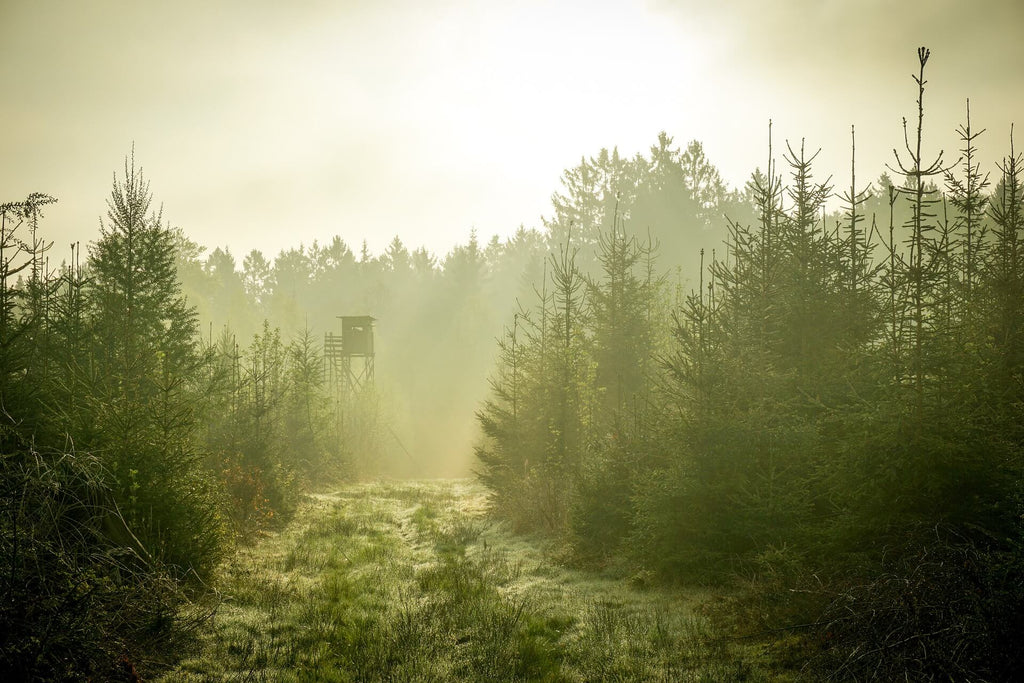The buck enclosure in spring - after the hunt is before the hunt

Whenever the last animal has been killed in a hunting season, you can mentally prepare yourself to take the next important steps. There is clearly no time to rest or sleep, because it is no exaggeration to say that after the hunt, you are basically faced with the hunt again. Spring is an excellent time of year when it comes to giving the roe deer a comfortable starting point for the coming year. The buck management in spring has a major influence on whether the game is able to gather enough strength or not. WOLFGANGS has highlighted the most important points and compiled useful information for you.
Ensuring a powerful deer
Spring should be characterised by consistently strong roe deer, so that the new year can be approached with a good dose of energy and strength. The window of opportunity in which this is possible opens at the beginning of April and closes again during the rutting season.
Powerful does not just mean that the deer is better able to cope in nature. From a hunter's perspective, the word " powerful " also means that one can hopefully record an increase in the weight of the venison within the herd. This increase is only possible, however, if the deer are resilient. Only then can they effectively fight off parasites or diseases. This also makes it easier to survive the colder winter months.
The main focus should therefore be on providing the deer with the perfect setting for feeding so that they can then gain weight. The motto should be to avoid restrictive and obstructive fences and similar barriers in the area so that the deer can reach the buds without any problems. These are extremely important for increasing body weight and should therefore not be too difficult to reach.

Buck hunting in spring - setting the table for the roe deer
Poplar and willow are not only beautiful to look at, but can also play a very practical role within the area. Both trees grow particularly quickly and this is exactly the property that can be used to your advantage by placing a cutting .
All you have to do is cut off a small branch and choose a suitable and, above all, moist spot in the area. Stick it in the ground and you're done - you can also use this quick procedure with broom or hawthorn. Plant as many cuttings as possible in the buck enclosure in spring. In this case, more is actually more.
By doing this, you are serving the deer a valuable protein meal, which is a first-class way of ensuring that they can gain weight easily at the crucial time. In addition, you are also creating a starting point at the same time. You can be sure that the animals will often stay in this part of the area from now on.
Privacy protection with effect
The placement of the cuttings discussed above makes sense especially in the open edge areas of a territory, as the rapid growth not only ensures food intake. The grown cuttings can also be described as a visual barrier , which gives animals prone to stress good cover. If the areas of the territory are very spacious and visible, it can actually be assumed that these circumstances will rob the deer of valuable energy because they do not feel comfortable.
Invest the time and allow the deer to have a better view of the area due to the reduced visibility. Many other plants can also help you in this way. Whether it's elderberry, wild pear or willow cone - you can achieve excellent results with relatively little effort.
Bringing the Wildacker into shape
Instead of drilling the wild field with a thoughtless wild field mixture, it is advisable to take a more strategically clever approach during the buck protection in spring. A soil analysis provides a quick remedy and reveals very informative results that allow much more precise and tangible planning. Instead of " burning " the money on the grazing planting and having to watch as nothing sprouts in the end, it is more worthwhile to invest the money in such an analysis in advance.
The cost of such a test is usually less than 20 euros and you will have the most important data at your fingertips in a short time. Information on the potassium and phosphorus content, the general condition of the soil and the pH value provide a completely new perspective that can help you plan your forage planting more successfully.
Deficiencies in soil values can then be easily compensated for by adding nutrients, for example. When the last frost has disappeared and the soil temperature is consistently around 8 degrees, you can start sowing. After drilling, you should make sure to roll the seed carefully.






